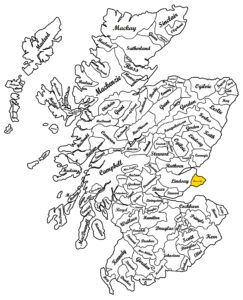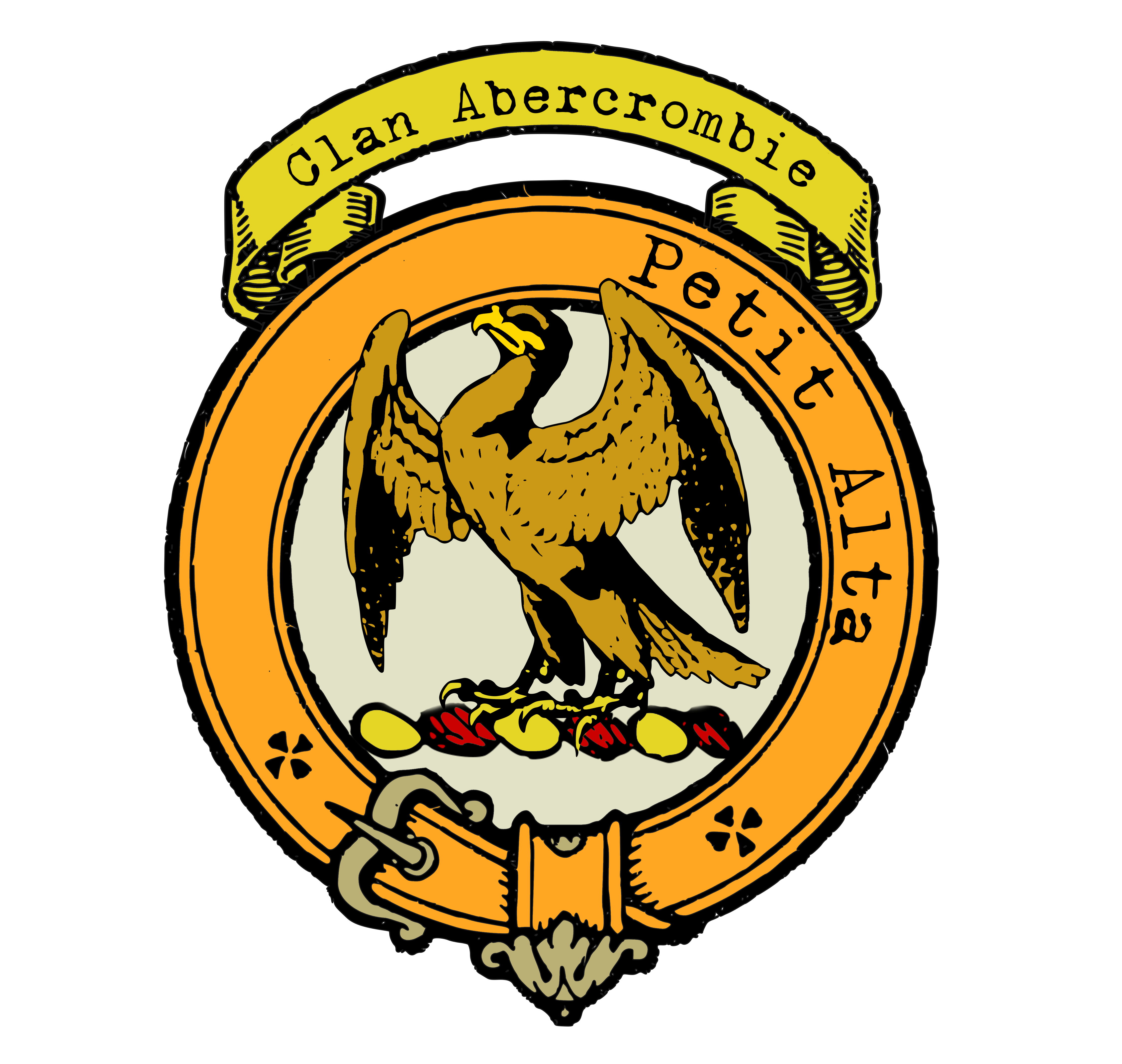Abercrombie Clan
| CREST: A flacon rising belled Proper MOTTO: Petit Alta TRANSLATION: He seeks high deeds VARIATIONS: Abercromby TARTAN: Blue and black ground, Green forms double check, White lines through Green. |
|
 The Abercrombies, also known as the Abercromby family, have a long and rich history in Scotland. The earliest record of the name can be traced back to the Ragman Roll in 1296, when William de Abercromby did homage to Edward I of England for his lands in Fife. The Abercrombies were no strangers to religious and political events over the centuries, and several members of the family left a lasting legacy in Scotland. The Abercrombies, also known as the Abercromby family, have a long and rich history in Scotland. The earliest record of the name can be traced back to the Ragman Roll in 1296, when William de Abercromby did homage to Edward I of England for his lands in Fife. The Abercrombies were no strangers to religious and political events over the centuries, and several members of the family left a lasting legacy in Scotland.
One of the most notable members of the Abercrombie family was Robert Abercromby, a Jesuit priest born in 1534. He was strongly opposed to the Reformation and the Scottish church and is credited with converting Queen Anne, wife of James VI, to Catholicism before her death. Robert was ultimately driven into exile after a substantial reward was offered for his capture. Another notable member of the Abercrombie family was Alexander Abercromby of Birkenbog, who was created a Baronet of Nova Scotia in 1637. Despite his royal favor, Alexander became a fervent Covenanter and expressed his opposition to the attempts of Charles I to impose an Episcopal church in Scotland. His lands of Birkenbog were originally church lands, and in 1362 the Earl of Mar confirmed Alexander’s grant of lands by the Bishop of Aberdeen. David Abercromby was another Jesuit who studied abroad and returned to Scotland to oppose the Protestant faith. However, he was eventually converted to it and published an important tract against papal power in 1682. Patrick Abercromby, the third son of the Laird of Fetterneir, a branch of the House of Birkenbog, became a distinguished doctor after graduating from the University of St Andrews in 1685. He was appointed personal physician to James VII and established a high reputation in his field. The Abercrombies also produced several military leaders, including Sir Ralph Abercromby and his brother Sir Robert Abercromby. Sir Ralph, born in 1734, was considered to be one of the greatest military reformers and has been credited with restructuring the army that ultimately defeated Napoleon. He served in the Seven Year’s War and was appointed commander-in-chief of the British forces fighting against the French in the West Indies. He is most famous for commanding the troops who captured the strategic fortress of Aboukir and defeated the French in the Battle of Alexandria, where he died of wounds. His contribution to the defeat of Napoleon was recognized when his widow was created a peeress in her own right, as Baroness Abercromby of Aboukir and Tullibody. Sir Robert Abercromby was also a general and held the post of governor of Edinburgh Castle for almost thirty years. |
|
Citations:
- Descriptive catalogue of the clan tartans and family tartans of Scotland with a brief note on their antiquity: also roll of the landlords and Baillies of lands in the Highlands and isles, A.D. 1587: roll of the clans; badges of the clans, John Catto and Company, King Street, Toronto, Canada
- Scottish Clan & Family Encyclopedia”, by Collins, HarperCollins Publishers 1994

- Purchase @ Redbubble
Purchase @ Amazon.com
Purchase @ Amazon.co.uk
